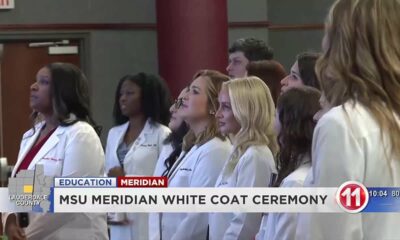Kaiser Health News
Gubernatorial Candidates Quarrel Over Glory for Winning Opioid Settlements
Aneri Pattani
Wed, 01 Nov 2023 09:00:00 +0000
Opioid settlement cash is not inherently political. It's not the result of a law passed by Congress nor an edit to the state budget. It's not taxpayer money. Rather, it's coming from health care companies that were sued for fueling the opioid crisis with prescription painkillers.
But like most dollars meant to address public health crises, settlement cash has nonetheless turned into a political issue.
Gubernatorial candidates in several states are clashing over who gets bragging rights for the funds — which total more than $50 billion and are being distributed to state and local governments over nearly two decades. Among the candidates are attorneys general who pursued the lawsuits that produced the payouts. And they're eager to remind the public who brought home the bacon.
“Scoring money for your constituency almost always plays well,” said Stephen Voss, an associate professor of political science at the University of Kentucky. It “is a lot more compelling and unifying a political argument than taking a position on something like abortion,” for which you risk alienating someone no matter what you say.
In Kentucky, Attorney General Daniel Cameron, the Republican candidate for governor, wants sole credit for the hundreds of millions of dollars his state is receiving to fight the opioid epidemic. In a post on X, formerly known as Twitter, he wrote that his opponent, former attorney general and current Democratic Gov. Andy Beshear, “filed a lot of lawsuits during his time [in] office, but in this race, there is only one person who has actually delivered dollars to fight the opioid epidemic, and it's not him.”
However, Beshear filed nine opioid lawsuits during his tenure as attorney general, several of which led to the current payouts. At a January news conference, Beshear defended his role: “That's where these dollars are coming from — cases that I filed, and I personally argued many of them in court.”
Polls indicate that Beshear leads Cameron ahead of the Nov. 7 election.
Christine Minhee, founder of OpioidSettlementTracker.com, who is closely following how attorneys general handle the money nationwide, said voters likely don't know that the opioid settlements are national deals crafted by a coalition of attorneys general and private lawyers. So when one candidate claims credit for the money, his constituents may believe “he's the sole hero in all of this.”
Candidates in other states are touting their settlement credentials, too. North Carolina Attorney General Josh Stein, a Democrat, lists securing opioid settlement funds at the top of the “accomplishments” section of his 2024 gubernatorial campaign website. West Virginia Attorney General Patrick Morrissey, a Republican gubernatorial candidate for 2024, has repeatedly boasted of securing the “highest per capita settlements in the nation” in news conferences and on social media and his campaign website.
In Louisiana, Attorney General Jeff Landry, a Republican who was recently elected governor, ran on a tough-on-crime platform, with endorsements from sheriffs and prosecutors. As attorney general, he led negotiations on dividing opioid settlement funds within the state, resulting in an agreement to send 80% to parish governments and 20% to sheriffs' departments — the largest direct allocation to law enforcement in the nation.
It's a common joke that AG stands for “aspiring governor,” and officials in that role often use big legal cases to advance their political careers. Research shows that attorneys general who participate in multistate litigation — like that which led to the opioid settlements and the tobacco settlement before it — are more likely to run for governor or senator.
But for some advocates and people personally affected by the opioid epidemic, this injection of politics raises concerns about how settlement dollars are being spent, who is making the decisions, and whether the money will truly address the public health crisis. Last year, more than 100,000 Americans died of drug overdoses.
Average people “don't really care about the bragging rights as much as they care about the ability to use that funding to improve and save lives,” said Shameka Parrish-Wright, director of VOCAL-KY, an advocacy group that champions investments in housing and health care.
“What I see in my state is a lot of press conferences and news pieces,” said Parrish-Wright, a Democrat who is active in local politics. “But what plays out doesn't get to the people” — especially those deeply affected by addiction.
For example, when Beshear celebrated a decrease in the state's overdose deaths, his announcement overlooked the increasing deaths among Black Kentuckians, Parrish-Wright said. And when Cameron's appointee to the state's opioid abatement advisory commission announced that $42 million of settlement funds were being considered to research ibogaine — a psychedelic drug that has shown potential to treat addiction — Parrish-Wright's first thought was “most poor people can't afford that.” To obtain it, people often have to travel out of the country.
The ibogaine announcement caused additional controversy. It's an experimental drug, and, if approved, the $42 million allocation would be the single-largest investment from the commission, which is housed in Cameron's agency. The Daily Beast reported that a billionaire Republican donor backing Cameron's gubernatorial campaign stands to reap massive profits from the drug's development.
Neither Cameron's office nor his campaign responded to requests for comment.
Beshear's office declined an interview request but referred KFF Health News to his previous public statements, in which he criticized the potential investment in ibogaine. He has suggested Cameron — whose campaign has emphasized support for police — is not putting his money where his mouth is.
“If you only provide $1 million to law enforcement and 42 to pharma, it doesn't seem like you're backing the blue. It seems like you're backing Big Pharma,” Beshear said at a May news conference.
He also said his two appointees to the commission were caught off guard by the public announcement on ibogaine, despite their role overseeing settlement funds.
Minhee, founder of OpioidSettlementTracker.com, said she's concerned that mixing politics with settlement funds could result in ineffective investments nationwide.
“If some of this money is going to be politicized to advance careers of attorneys general who support the war on drugs, then that is literally using monies won by death to feed into more death,” she said.
Parrish-Wright, of VOCAL-KY, said she worries that candidates — and some voters — will forget about the significance of the money once ballots are cast.
“We cannot let it fade after the election cycle,” she said.
Her solution depends in part on politics. She's on the ballot herself Nov. 7, for a seat on Louisville's Metro Council. If she wins, she said, she intends to keep the settlement in the public conversation.
——————————
By: Aneri Pattani
Title: Gubernatorial Candidates Quarrel Over Glory for Winning Opioid Settlements
Sourced From: kffhealthnews.org/news/article/governor-candidates-attorneys-general-opioid-settlements-credit/
Published Date: Wed, 01 Nov 2023 09:00:00 +0000
Kaiser Health News
Medical Residents Are Increasingly Avoiding States With Abortion Restrictions
Julie Rovner, KFF Health News and Rachana Pradhan
Thu, 09 May 2024 12:01:00 +0000
Isabella Rosario Blum was wrapping up medical school and considering residency programs to become a family practice physician when she got some frank advice: If she wanted to be trained to provide abortions, she shouldn't stay in Arizona.
Blum turned to programs mostly in states where abortion access — and, by extension, abortion training — is likely to remain protected, like California, Colorado, and New Mexico. Arizona has enacted a law banning most abortions after 15 weeks.
“I would really like to have all the training possible,” she said, “so of course that would have still been a limitation.”
In June, she will start her residency at Swedish Cherry Hill hospital in Seattle.
According to new statistics from the Association of American Medical Colleges, for the second year in a row, students graduating from U.S. medical schools were less likely to apply this year for residency positions in states with abortion bans and other significant abortion restrictions.
Since the Supreme Court in 2022 overturned the constitutional right to an abortion, state fights over abortion access have created plenty of uncertainty for pregnant patients and their doctors. But that uncertainty has also bled into the world of medical education, forcing some new doctors to factor state abortion laws into their decisions about where to begin their careers.
Fourteen states, primarily in the Midwest and South, have banned nearly all abortions. The new analysis by the AAMC — a preliminary copy of which was exclusively reviewed by KFF Health News before its public release — found that the number of applicants to residency programs in states with near-total abortion bans declined by 4.2%, compared with a 0.6% drop in states where abortion remains legal.
Notably, the AAMC's findings illuminate the broader problems abortion bans can create for a state's medical community, particularly in an era of provider shortages: The organization tracked a larger decrease in interest in residencies in states with abortion restrictions not only among those in specialties most likely to treat pregnant patients, like OB-GYNs and emergency room doctors, but also among aspiring doctors in other specialties.
“It should be concerning for states with severe restrictions on reproductive rights that so many new physicians — across specialties — are choosing to apply to other states for training instead,” wrote Atul Grover, executive director of the AAMC's Research and Action Institute.
The AAMC analysis found the number of applicants to OB-GYN residency programs in abortion ban states dropped by 6.7%, compared with a 0.4% increase in states where abortion remains legal. For internal medicine, the drop observed in abortion ban states was over five times as much as in states where abortion is legal.
In its analysis, the AAMC said an ongoing decline in interest in ban states among new doctors ultimately “may negatively affect access to care in those states.”
Jack Resneck Jr., immediate past president of the American Medical Association, said the data demonstrates yet another consequence of the post-Roe v. Wade era.
The AAMC analysis notes that even in states with abortion bans, residency programs are filling their positions — mostly because there are more graduating medical students in the U.S. and abroad than there are residency slots.
Still, Resneck said, “we're extraordinarily worried.” For example, physicians without adequate abortion training may not be able to manage miscarriages, ectopic pregnancies, or potential complications such as infection or hemorrhaging that could stem from pregnancy loss.
Those who work with students and residents say their observations support the AAMC's findings. “People don't want to go to a place where evidence-based practice and human rights in general are curtailed,” said Beverly Gray, an associate professor of obstetrics and gynecology at Duke University School of Medicine.
Abortion in North Carolina is banned in nearly all cases after 12 weeks. Women who experience unexpected complications or discover their baby has potentially fatal birth defects later in pregnancy may not be able to receive care there.
Gray said she worries that even though Duke is a highly sought training destination for medical residents, the abortion ban “impacts whether we have the best and brightest coming to North Carolina.”
Rohini Kousalya Siva will start her obstetrics and gynecology residency at MedStar Washington Hospital Center in Washington, D.C., this year. She said she did not consider programs in states that have banned or severely restricted abortion, applying instead to programs in Maryland, New Hampshire, New York, and Washington, D.C.
“We're physicians,” said Kousalya Siva, who attended medical school in Virginia and was previously president of the American Medical Student Association. “We're supposed to be giving the best evidence-based care to our patients, and we can't do that if we haven't been given abortion training.”
Another consideration: Most graduating medical students are in their 20s, “the age when people are starting to think about putting down roots and starting families,” said Gray, who added that she is noticing many more students ask about politics during their residency interviews.
And because most young doctors make their careers in the state where they do their residencies, “people don't feel safe potentially having their own pregnancies living in those states” with severe restrictions, said Debra Stulberg, chair of the Department of Family Medicine at the University of Chicago.
Stulberg and others worry that this self-selection away from states with abortion restrictions will exacerbate the shortages of physicians in rural and underserved areas.
“The geographic misalignment between where the needs are and where people are choosing to go is really problematic,” she said. “We don't need people further concentrating in urban areas where there's already good access.”
After attending medical school in Tennessee, which has adopted one of the most sweeping abortion bans in the nation, Hannah Light-Olson will start her OB-GYN residency at the University of California-San Francisco this summer.
It was not an easy decision, she said. “I feel some guilt and sadness leaving a situation where I feel like I could be of some help,” she said. “I feel deeply indebted to the program that trained me, and to the patients of Tennessee.”
Light-Olson said some of her fellow students applied to programs in abortion ban states “because they think we need pro-choice providers in restrictive states now more than ever.” In fact, she said, she also applied to programs in ban states when she was confident the program had a way to provide abortion training.
“I felt like there was no perfect, 100% guarantee; we've seen how fast things can change,” she said. “I don't feel particularly confident that California and New York aren't going to be under threat, too.”
As a condition of a scholarship she received for medical school, Blum said, she will have to return to Arizona to practice, and it is unclear what abortion access will look like then. But she is worried about long-term impacts.
“Residents, if they can't get the training in the state, then they're probably less likely to settle down and work in the state as well,” she said.
——————————
By: Julie Rovner, KFF Health News and Rachana Pradhan
Title: Medical Residents Are Increasingly Avoiding States With Abortion Restrictions
Sourced From: kffhealthnews.org/news/article/medical-students-residents-spurning-abortion-ban-states/
Published Date: Thu, 09 May 2024 12:01:00 +0000
Did you miss our previous article…
https://www.biloxinewsevents.com/paid-sick-leave-sticks-after-many-pandemic-protections-vanish/
Kaiser Health News
Paid Sick Leave Sticks After Many Pandemic Protections Vanish
Zach Dyer
Thu, 09 May 2024 09:00:00 +0000
Bill Thompson's wife had never seen him smile with confidence. For the first 20 years of their relationship, an infection in his mouth robbed him of teeth, one by one.
“I didn't have any teeth to smile with,” the 53-year-old of Independence, Missouri, said.
Thompson said he dealt with throbbing toothaches and painful swelling in his face from abscesses for years working as a cook at Burger King. He desperately needed to see a dentist but said he couldn't afford to take time off without pay. Missouri is one of many states that do not require employers to provide paid sick leave.
So, Thompson would swallow Tylenol and push through the pain as he worked over the hot grill.
“Either we go to work, have a paycheck,” Thompson said. “Or we take care of ourselves. We can't take care of ourselves because, well, this vicious circle that we're stuck in.”
In a nation that was sharply divided about government health mandates during the covid-19 pandemic, the public has been warming to the idea of government rules providing for paid sick leave.
Before the pandemic, 10 states and the District of Columbia had laws requiring employers to provide paid sick leave. Since then, Colorado, New York, New Mexico, Illinois, and Minnesota have passed laws offering some kind of paid time off for illness. Oregon and California expanded previous paid leave laws. In Missouri, Alaska, and Nebraska, advocates are pushing to put the issue on the ballot this fall.
The U.S. is one of nine countries that do not guarantee paid sick leave, according to data compiled by the World Policy Analysis Center.
In response to the pandemic, Congress passed the Emergency Paid Sick Leave and Emergency Family and Medical Leave Expansion acts. These temporary measures allowed employees to take up to two weeks of paid sick leave for covid-related illness and caregiving. But the provisions expired in 2021.
“When the pandemic hit, we finally saw some real political will to solve the problem of not having federal paid sick leave,” said economist Hilary Wething.
Wething co-authored a recent Economic Policy Institute report on the state of sick leave in the United States. It found that more than half, 61%, of the lowest-paid workers can't get time off for an illness.
“I was really surprised by how quickly losing pay — because you're sick — can translate into immediate and devastating cuts to a family's household budget,” she said.
Wething noted that the lost wages of even a day or two can be equivalent to a month's worth of gasoline a worker would need to get to their job, or the choice between paying an electric bill or buying food. Wething said showing up to work sick poses a risk to co-workers and customers alike. Low-paying jobs that often lack paid sick leave — like cashiers, nail technicians, home health aides, and fast-food workers — involve lots of face-to-face interactions.
“So paid sick leave is about both protecting the public health of a community and providing the workers the economic security that they desperately need when they need to take time away from work,” she said.
The National Federation of Independent Business has opposed mandatory sick leave rules at the state level, arguing that workplaces should have the flexibility to work something out with their employees when they get sick. The group said the cost of paying workers for time off, extra paperwork, and lost productivity burdens small employers.
According to a report by the National Bureau of Economic Research, once these mandates go into effect, employees take, on average, two more sick days a year than before a law took effect.
Illinois' paid time off rules went into effect this year. Lauren Pattan is co-owner of the Old Bakery Beer Co. there. Before this year, the craft brewery did not offer paid time off for its hourly employees. Pattan said she supports Illinois' new law but she has to figure out how to pay for it.
“We really try to be respectful of our employees and be a good place to work, and at the same time we get worried about not being able to afford things,” she said.
That could mean customers have to pay more to cover the cost, Pattan said.
As for Bill Thompson, he wrote an op-ed for the Kansas City Star newspaper about his dental struggles.
“Despite working nearly 40 hours a week, many of my co-workers are homeless,” he wrote. “Without health care, none of us can afford a doctor or a dentist.”
That op-ed generated attention locally and, in 2018, a dentist in his community donated his time and labor to remove Thompson's remaining teeth and replace them with dentures. This allowed his mouth to recover from the infections he'd been dealing with for years. Today, Thompson has a new smile and a job — with paid sick leave — working in food service at a hotel.
In his free time, he's been collecting signatures to put an initiative on the November ballot that would guarantee at least five days of earned paid sick leave a year for Missouri workers. Organizers behind the petition said they have enough signatures to take it before the voters.
——————————
By: Zach Dyer
Title: Paid Sick Leave Sticks After Many Pandemic Protections Vanish
Sourced From: kffhealthnews.org/news/article/paid-sick-leave-post-pandemic-state-laws/
Published Date: Thu, 09 May 2024 09:00:00 +0000
Did you miss our previous article…
https://www.biloxinewsevents.com/forget-ringing-the-button-for-the-nurse-patients-now-stay-connected-by-wearing-one/
Kaiser Health News
Forget Ringing the Button for the Nurse. Patients Now Stay Connected by Wearing One.
Phil Galewitz, KFF Health News
Wed, 08 May 2024 09:00:00 +0000
HOUSTON — Patients admitted to Houston Methodist Hospital get a monitoring device about the size of a half-dollar affixed to their chest — and an unwitting role in the expanding use of artificial intelligence in health care.
The slender, battery-powered gadget, called a BioButton, records vital signs including heart and breathing rates, then wirelessly sends the readings to nurses sitting in a 24-hour control room elsewhere in the hospital or in their homes. The device's software uses AI to analyze the voluminous data and detect signs a patient's condition is deteriorating.
Hospital officials say the BioButton has improved care and reduced the workload of bedside nurses since its rollout last year.
“Because we catch things earlier, patients are doing better, as we don't have to wait for the bedside team to notice if something is going wrong,” said Sarah Pletcher, system vice president at Houston Methodist.
But some nurses fear the technology could wind up replacing them rather than supporting them — and harming patients. Houston Methodist, one of dozens of U.S. hospitals to employ the device, is the first to use the BioButton to monitor all patients except those in intensive care, Pletcher said.
“The hype around a lot of these devices is they provide care at scale for less labor costs,” said Michelle Mahon, a registered nurse and an assistant director of National Nurses United, the profession's largest U.S. union. “This is a trend that we find disturbing,” she said.
The rollout of BioButton is among the latest examples of hospitals deploying technology to improve efficiency and address a decades-old nursing shortage. But that transition has raised its own concerns, including about the device's use of AI; polls show the public is wary of health providers relying on it for patient care.
In December 2022 the FDA cleared the BioButton for use in adult patients who are not in critical care. It is one of many AI tools now used by hospitals for tasks like reading diagnostic imaging results.
In 2023, President Joe Biden directed the Department of Health and Human Services to develop a plan to regulate AI in hospitals, including by collecting reports of patients harmed by its use.
The leader of BioIntelliSense, which developed the BioButton, said its device is a huge advance compared with nurses walking into a room every few hours to measure vital signs. “With AI, you now move from ‘I wonder why this patient crashed' to ‘I can see this crash coming before it happens and intervene appropriately,'” said James Mault, CEO of the Golden, Colorado-based company.
The BioButton stays on the skin with an adhesive, is waterproof, and has up to a 30-day battery life. The company says the device — which allows providers to quickly notice deteriorating health by recording more than 1,000 measurements a day per patient — has been used on more than 80,000 hospital patients nationwide in the past year.
Hospitals pay BioIntelliSense an annual subscription fee for the devices and software.
Houston Methodist officials would not reveal how much the hospital pays for the technology, though Pletcher said it equates to less than a cup of coffee a day per patient.
For a hospital system that treats thousands of patients at a time — Houston Methodist has 2,653 non-ICU beds at its eight Houston-area hospitals — such an investment could still translate to millions of dollars a year.
Hospital officials say they have not made any changes in nurse staffing and have no plans to because of implementing the BioButton.
Inside the hospital's control center for virtual monitoring on a recent morning, about 15 nurses and technicians dressed in scrubs sat in front of large monitors showing the health status of hundreds of patients they were assigned to monitor.
A red checkmark next to a patient's name signaled the AI software had found readings trending outside normal. Staff members could click into a patient's medical record, showing patients' vital signs over time and other medical history. These virtual nurses, if you will, could contact nurses on the floor by phone or email, or even dial directly into the patient's room via video call.
Nutanben Gandhi, a technician who was watching 446 patients on her monitor that morning, said that when she gets an alert, she looks at the patient's health record to see if the anomaly can be easily explained by something in the patient's condition or if she needs to contact nurses on the patient's floor.
Oftentimes an alert can be easily dismissed. But identifying signs of deteriorating health can be tough, said Steve Klahn, Houston Methodist's clinical director of virtual medicine.
“We are looking for a needle in a haystack,” he said.
Donald Eustes, 65, was admitted to Houston Methodist in March for prostate cancer treatment and has since been treated for a stroke. He is happy to wear the BioButton.
“You never know what can happen here, and having an extra set of eyes looking at you is a good thing,” he said from his hospital bed. After being told the device uses AI, the Montgomery, Texas, man said he has no problem with its helping his clinical team. “This sounds like a good use of artificial intelligence.”
Patients and nurses alike benefit from remote monitoring like the BioButton, said Pletcher of Houston Methodist.
The hospital has placed small cameras and microphones inside all patient rooms enabling nurses outside to communicate with patients and perform tasks such as helping with patient admissions and discharge instructions. Patients can include family members on the remote calls with nurses or a doctor, she said.
Virtual technology frees up on-duty nurses to provide more hands-on help, such as starting an intravenous line, Pletcher said. With the BioButton, nurses can wait to take routine vital signs every eight hours instead of every four, she said.
Pletcher said the device reduces nurses' stress in monitoring patients and allows some to work more flexible hours because virtual care can be done from home rather than coming to the hospital. Ultimately it helps retain nurses, not drive them away, she said.
Sheeba Roy, a nurse manager at Houston Methodist, said some members of the nursing staff were nervous about relying on the device and not checking patients' vital signs as often themselves. But testing has shown the device provides accurate information.
“After we implemented it, the staff loves it,” Roy said.
Serena Bumpus, chief executive officer of the Texas Nurses Association, said her concern with any technology is that it can be more burdensome on nurses and take away time with patients.
“We have to be hypervigilant in ensuring that we are not leaning on this to replace the ability of nurses to critically think and assess patients and validate what this device is telling us is true,” Bumpus said.
Houston Methodist this year plans to send the BioButton home with patients so the hospital can better track their progress in the weeks after discharge, measuring the quality of their sleep and checking their gait.
“We are not going to need less nurses in health care, but we have limited resources and we have to use those as thoughtfully as we can,” Pletcher said. “Looking at projected demand and seeing the supply we have coming, we will not have enough to meet demand, so anything we can do to give time back to nurses is a good thing.”
——————————
By: Phil Galewitz, KFF Health News
Title: Forget Ringing the Button for the Nurse. Patients Now Stay Connected by Wearing One.
Sourced From: kffhealthnews.org/news/article/hospital-artificial-intelligence-patient-monitoring-biobutton-houston/
Published Date: Wed, 08 May 2024 09:00:00 +0000
Did you miss our previous article…
https://www.biloxinewsevents.com/they-were-shot-at-the-super-bowl-parade-and-might-have-bullets-in-their-bodies-forever/
-
SuperTalk FM7 days ago
Driver’s education set to become mandatory in Mississippi as bill passes
-
SuperTalk FM6 days ago
State approves $160M to expand Highway 7 to four lanes in Lafayette County
-
SuperTalk FM2 days ago
Legislation outlawing ‘squatted’ vehicles in Mississippi signed into law
-
Mississippi Today4 days ago
On this day in 1917
-
Mississippi News4 days ago
LCSO wants people aware of a scam circling the area
-
228Sports2 days ago
PRC’s Bats Come Alive Late As Blue Devils Beat Picayune To Advance To 6A South State Title Series
-
Mississippi News4 days ago
Winston Co. Sheriff’s Office investigates shooting at Dave’s Club
-
Mississippi News7 days ago
Altercation at Mississippi police department leads to officer-involved shooting








































